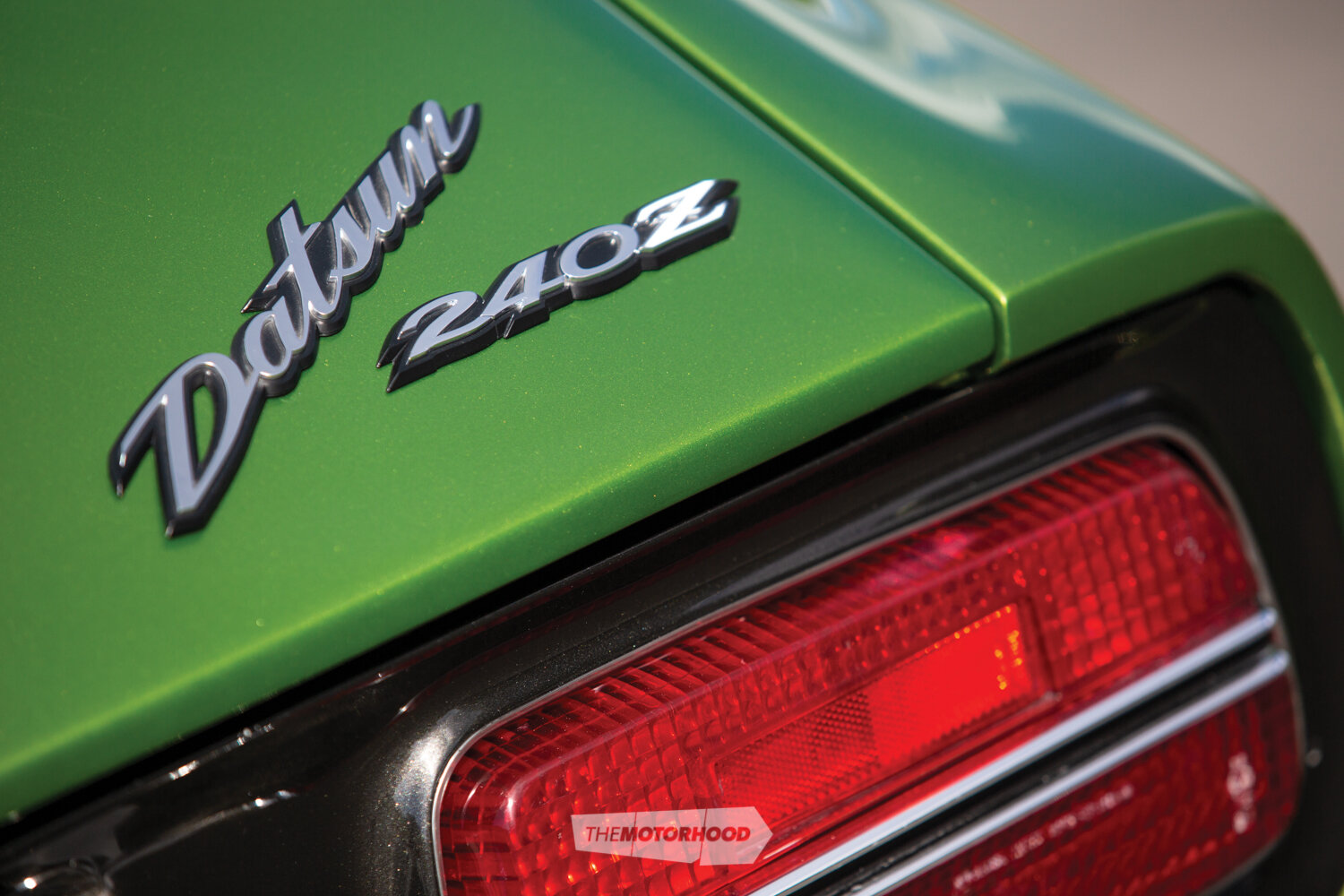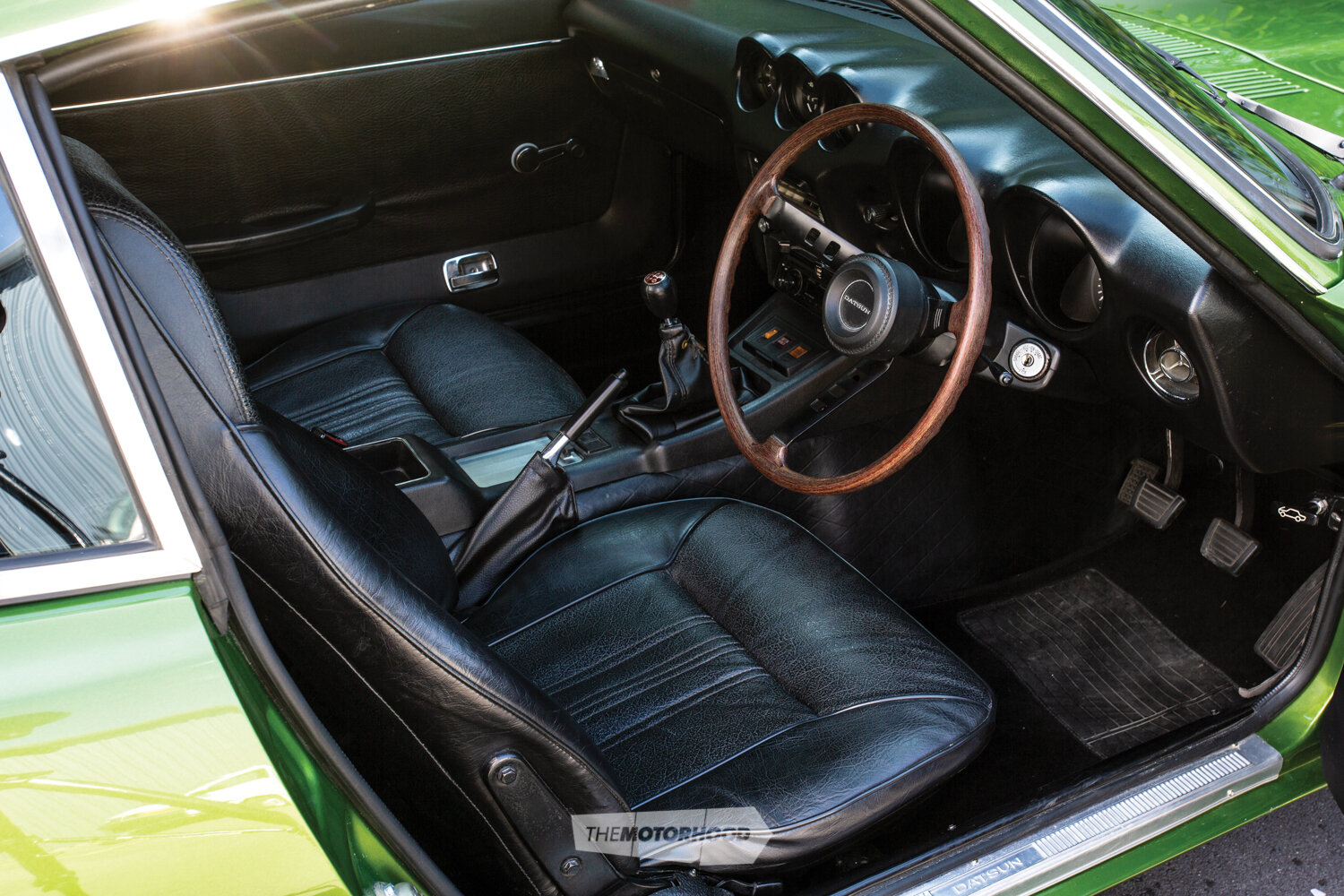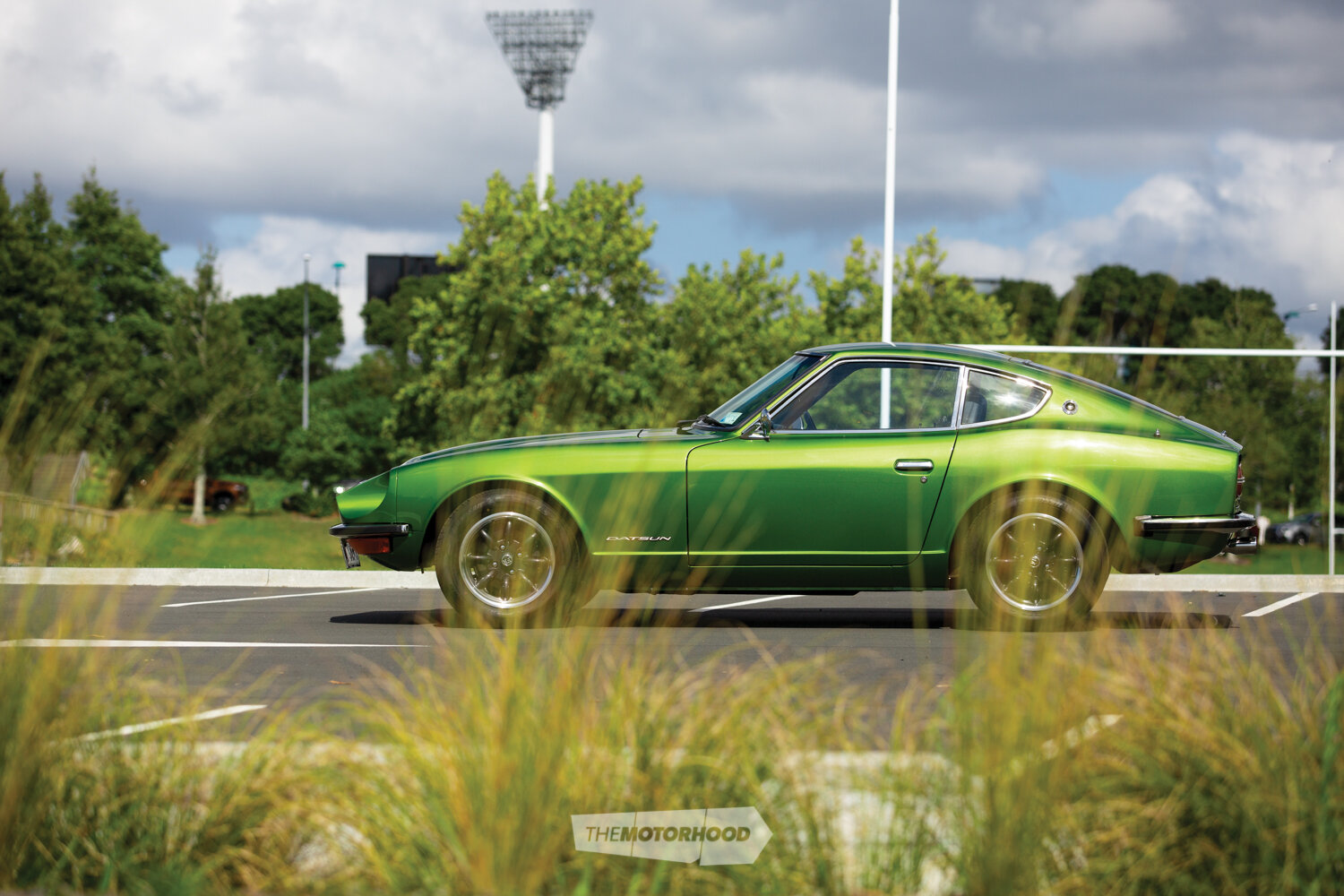The Chris Stephens Datsun 240Z is a brilliant example of a model that changed the way we think about Japanese cars

Is Japan about to become the new force in the classic car movement, and, if so, will it be led by a top-selling sports car that launched in 1970? When it hit the market, Datsun’s original MkI 240Z coupé was clearly the best-looking production car ever produced in Japan, yet this front-engined, rear-driver was more than just good-looking.
Among several Japanese classics, Aucklander Chris Stephens has this pristine 1972 HLS30-series 240Z. With younger classic car enthusiasts coming through, he sees a growing trend for preserving and nurturing cars from the ’70s and ’80s — and, in this part of the world, many of these will be mainstream Japanese. As ageing classic car followers die off, the stage is filling with increasingly youthful people who grew up and are familiar with vehicles of more recent vintage.
Modern cars have changed so much, and, as Chris says, “People don’t know how a car works, and they don’t want to know.” He recalls growing up fixing cars and remembers attending to his Morris Marina while on his OE to Europe with his wife in the early ’80s. Residing in the posh Mayfair district of London, the Marina gearbox needed reconditioning. With ‘Residents parking’ sticker firmly in place and the Morris immobile at the kerb, Chris jacked up the car, removed the heavy gearbox, and carried it to the nearest tube station, travelling by underground to north London where the parts could be rectified.
Prior to this, and fresh out of university, Chris spent a year working for the New Zealand Motor Corporation in Wellington, so the interest in cars came at an early age. These days, he wears a T-shirt bearing the words, “Chris Classics since 1955”. That doesn’t imply that he has had an interest in classic cars since then; “It’s just that I’ve been around since then,” he quips.

A Japanese sports car challenge
It is clear he has a soft spot for this rather special Japanese car that established Japan on the world sports car stage. The 240Z was always highly sought after, especially in New Zealand, where a prospective buyer almost had to walk barefoot over broken glass to have one in the garage — or at least have an overseas funds deposit that would secure an order. While thin on the ground, not because of demand but due to limited availability on our shores, this never detracted from the overwhelming appeal of a car that was surely destined to be memorable.
Walk around a first-generation 240Z and the car simply looks right from any angle, with beautiful proportions that would be watered down and fattened with fiddles to styling and legislative demands (mainly from the important US market) in the subsequent 260Z and 260Z 2+2 in 1973 and 280Z in 1975. Chris is among many of us wondering why motor manufacturers often create tidy designs and then proceed to mess them up in successive generations.
The Stephens Datsun started out red and underwent a total restoration by Dave Hunt at Phataz Bodyz in Christchurch about 12 years ago. Since then, Chris has spent a further $12K on restoration. Now, of course, resplendent in bright metallic green, Chris relates that this is actually a Holden HSV colour (No. 113), which he says is easy to replicate compared with a mixed up odd colour that might be difficult to match. The car’s original Tauranga owner from new only kept the Datsun for 10 months and ran up 6000km, and then two Bay of Plenty motorists took charge, one after the other, before the car went to its fourth owner, who was based in Dunedin.

Acquired from Invercargill
Then followed a succession of owners in Timaru, Auckland, and Tauranga once more, before it returned to reside in Auckland. By 2003, the 240Z had amassed 15 ownership changes, not including a few dealer transfers. Chris is unsure of the car’s current mileage and official records are all over the place, with a recorded ownership change in 1987 listed at 118,000km and the subsequent registration transfer showing a mere 49,000km!
Four years ago, Stephens bought the car sight unseen from Invercargill and had it freighted to Auckland during a period of torrential rain. “When I went to collect the Datsun, it was soaking wet, damp inside, and full of condensation, and I thought I had bought a car that turned out to be a paddling pool,” he says. Not only that but the 2.4-litre in-line six was only running on four cylinders, and, with some minor cracking, the rear hatch was showing signs of deterioration from an earlier comprehensive rebuild a decade or so earlier. The passage of time meant that some rectification was necessary.
Chris talks about an element of fatigue present when embarking on a major restoration, and that it is sometimes prudent to take it to the next level. In other words, no matter how thorough a restoration, it can usually be made even better.
The black-on-white-plated ‘240Z 1’ — not, of course, its original silver-on-black registration — is a brilliant example, with accurate body shut lines, a superb engine compartment, and remarkably original black interior with trim showing only a few signs of wear and still with its original seating foam.


Factory wheels long gone
Its owner hankers after originality and mourns the fact that many owners of older everyday cars tamper with bodywork and fit oversize wheels and tyres. While the 240Z’s 14-inch 4.5J factory steel wheels are long gone, at least the replacement 15-inch FR Design alloys are discreet and complement the car’s handsome looks.
The chrome bumpers, with their modest rubber inset corners and black grille, are tasteful; the smooth bonnet is uncluttered; the profile is impeccable; and the rear-end shaping subtle. Observe the touches of E-Type Jaguar and styling cues of the Ferrari 275 GTB, Porsche 911, and Aston Martin DBS. Designed by Austrian Albrecht von Goertz, there is absolutely nothing to dislike about the way that this rakish two-seater looks 50 years after first breaking cover at its world launch in the US, four weeks before going on sale in Japan.
Settle down inside and note how the three-spoke steering wheel has a fake wooden rim, while the two main deep-set instruments are flanked by three smaller hooded dials set atop the facia rail for water temperature, oil pressure, amperes, fuel, and time, where they are easily monitored. There’s a carpeted area behind the two bucket seats for luggage, with the spare wheel under a lift-up floor. It all looks brand new there, just like the spotless mechanicals, while the underside is immaculate, if not up to peak concours level. “I like to use my cars,” says Chris, “although I don’t like to take them out in the rain.”

Highly rated overhead-camshaft straight-six
The L24 engine, with its cast-iron block, alloy head, seven-bearing crankshaft, and two valves per cylinder, was a development of the highly rated four-cylinder single-overhead-camshaft unit used in many Nissan models, including the Datsun 1600. Two Hitachi side-draught carburettors look strikingly similar to the SUs that were so popular on British Motor Corporation cars. Emission control knocked the performance of the longer stroke 260Z, and this was restored when fuel injection was adopted for the 280Z.
As a sporting package, the car is hard to fault, with its five-speed gearbox and rack-and-pinion steering with 2.7 turns lock to lock, although the front Girling/Sumitomo disc brakes are prone to fade and restorers sometimes fit Range Rover calipers as a remedy. The all-independent suspension comprises MacPherson struts, lower links, and a torque arm up front, and struts and lower wishbones at the rear. In 1970, this made the five-year-old MGB GT, with its live rear axle, look extremely basic — and the Datsun was only slightly more expensive, at least on the US market.
Starting easily from cold, the engine in Chris’s car runs smoothly and has good torque, with 198Nm at 4400rpm. There is no shortage of performance, with 113kW on tap and a top speed just on 200kph. The car is mechanically standard, apart from stainless-steel headers and a stainless exhaust that sounds good. “Every car from the ’70s could do with better breathing,” says Chris. A regular 240Z complaint has been apparent — a sticky throttle, because the throttle linkage is made up of several rods and rose joints that make the Datsun difficult to drive smoothly.


One of the best collectables
The 240Z is one of the best collectables of the early ’70s, while also being a reliable, easy-to-use car embodying Nissan’s mechanical excellence that has long been beyond question. However, they are rare in right-hand drive form, with the majority of the 168,584 units produced during the three-year model cycle going to North America. With its careful attention to detail and unmolested condition, this example is surely one of the best 240Zs in New Zealand, and its current owner is in for the long haul. A Datsun to be loved, for sure.
Chris is clearly keen on cars of this era, and there is little doubt that there is a growing general enthusiasm for early Japanese models. Given that Chris Stephens has a love of early Holdens, it is significant that among his collection he rates the 240Z and a rare Japanese domestic market first-generation Toyota TE27 twin-cam as perhaps his two favourites. He is nothing if not varied in his appreciation of fine motor vehicles. And, in this modern day, he is anxious to preserve the wonderful heritage of classic cars from all eras while worrying about how authorities will treat such cars, whose very existence may soon be threatened by legislation.



